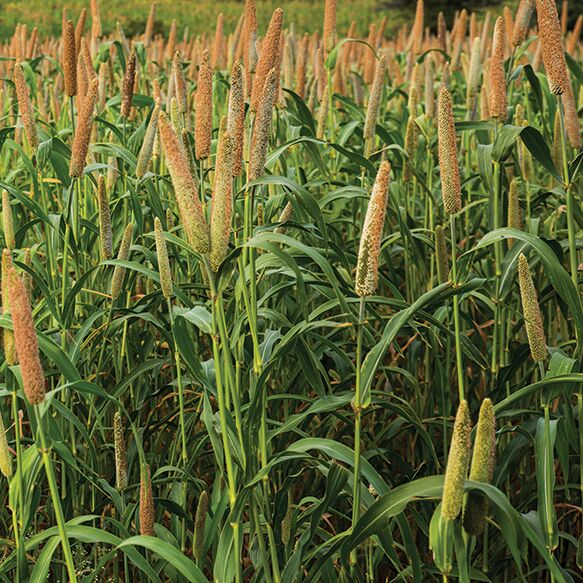A millet that can be used for forage or summer cover crop. It does better in wet soils than many of the other summer annuals. Fast growth and a fibrous root system makes it an excellent cover crop. It has a finer stem than pearl millet and sorghum and makes high quality forage for grazing or hay.
This is a warm season annual, similar to sorghum sudans, with no prussic acid. Dry matter production is 20 percent less than sorghum sudans with better digestibility and protein.
It needs a soil temperature of 65 degrees or more to germinate, and growth slows down when cool weather comes (September). Frost kills millet, but it can still be grazed with no fear of prussic acid. Will tolerate wetter years better than sorghums. It needs good seed-to-soil contact and it’s not as competitive with existing grass as sorghum sudans. Like sorghum sudans, it can use lots of nitrogen.
Millet works well as part of a summer annual mix or in a straight stand for renovating pastures, before a new seeding of perennials. Can also be used for wildlife plots as it is a great food source if let go to seed.
